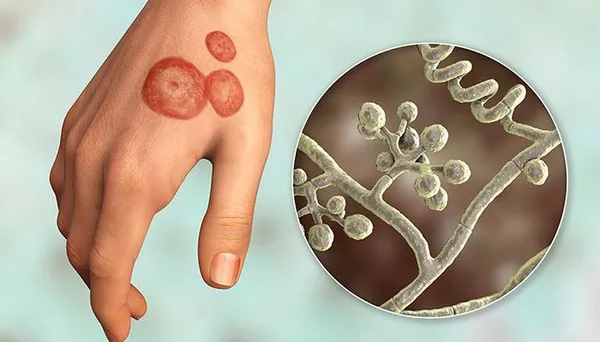Hidradenitis suppurativa (HS) is a chronic inflammatory skin condition characterized by painful nodules, abscesses, and sinus tracts primarily affecting the areas with apocrine sweat glands, such as the axillae, groin, and buttocks. While the primary symptoms of HS are well-documented, questions often arise regarding its potential to induce fever. In this comprehensive exploration, we delve into the underlying mechanisms of HS, investigate its association with fever, and examine the implications for diagnosis and management.
Understanding Hidradenitis Suppurativa
To comprehend the potential link between HS and fever, it is crucial to first grasp the pathophysiology of this enigmatic disease. HS is believed to originate from follicular occlusion, leading to inflammation, rupture of hair follicles, and subsequent formation of abscesses and sinus tracts. Despite extensive research, the precise etiology of HS remains elusive, with factors such as genetic predisposition, hormonal imbalance, and immune dysregulation implicated in its development.
The Inflammatory Cascade
Central to the pathogenesis of HS is a dysregulated immune response, characterized by the production of pro-inflammatory cytokines and infiltration of immune cells into the affected tissue. This inflammatory cascade contributes to the characteristic symptoms of HS, including pain, swelling, and tissue destruction. Moreover, systemic inflammation has been documented in individuals with HS, manifesting as elevated levels of inflammatory markers such as C-reactive protein (CRP) and interleukin-6 (IL-6).
The Fever Phenomenon
Fever, defined as a temporary elevation of body temperature above the normal range, is a hallmark of systemic inflammation and infection. While fever is commonly associated with infectious diseases, its occurrence in non-infectious conditions, including autoimmune disorders and malignancies, underscores the diverse mechanisms underlying this physiological response. In the context of HS, fever may arise as a consequence of the intense local and systemic inflammation characteristic of the disease.
Clinical Evidence
Although fever is not considered a cardinal feature of HS, several studies have documented its prevalence in affected individuals. A retrospective analysis by Zouboulis et al. (2017) reported fever in approximately 20% of HS patients, with higher rates observed during disease flares. Similarly, a cross-sectional study by Vossen et al. (2020) found that 16% of HS patients experienced fever as a symptom. Notably, fever in HS appears to be transient and often coincides with disease exacerbations, suggesting a close association with the underlying inflammatory process.
Mechanistic Insights
The relationship between HS and fever can be elucidated by examining the immunological mechanisms driving both phenomena. Inflammatory mediators such as tumor necrosis factor-alpha (TNF-α), interleukin-1 beta (IL-1β), and interleukin-17 (IL-17) play pivotal roles in the pathogenesis of HS, orchestrating the recruitment of immune cells and perpetuating tissue inflammation. Importantly, these same cytokines have been implicated in the regulation of body temperature, acting on the hypothalamus to induce fever via prostaglandin synthesis.
Clinical Implications
The recognition of fever as a potential manifestation of HS holds significant implications for clinical practice. Healthcare providers should be vigilant for the presence of fever in patients with HS, particularly during disease exacerbations or the development of complications such as cellulitis or abscess formation. Furthermore, the assessment of inflammatory markers such as CRP and erythrocyte sedimentation rate (ESR) may aid in monitoring disease activity and guiding treatment decisions.
Treatment Considerations
In addressing fever associated with HS, the overarching goal remains the management of underlying inflammation and disease activity. Current treatment modalities for HS encompass a multidisciplinary approach, including medical therapies, surgical interventions, and lifestyle modifications. Systemic agents targeting key pro-inflammatory pathways, such as TNF-α inhibitors and IL-17 antagonists, have demonstrated efficacy in reducing disease severity and improving patient outcomes. Additionally, the prompt identification and treatment of secondary infections are paramount in controlling fever and preventing complications.
Future Directions
While the association between HS and fever is increasingly recognized, further research is warranted to elucidate the underlying mechanisms and optimize clinical management. Prospective studies investigating the prevalence of fever in larger cohorts of HS patients, as well as the impact of treatment interventions on fever resolution, would provide valuable insights into this phenomenon. Moreover, the development of novel therapeutic strategies targeting specific immunological pathways implicated in both HS and fever holds promise for improving patient care and outcomes.
Conclusion
In conclusion, while fever is not a defining feature of Hidradenitis Suppurativa, its occurrence in affected individuals underscores the profound inflammatory nature of the disease. By unraveling the complex interplay between local tissue inflammation, systemic immune activation, and fever induction, we gain valuable insights into the pathophysiology of HS and its clinical manifestations. Moving forward, a comprehensive understanding of this relationship will inform therapeutic strategies aimed at alleviating symptoms, reducing disease burden, and improving the quality of life for individuals living with HS.
Related Topics:
Is Hidradenitis Suppurativa (HS) Life Threatening?

























